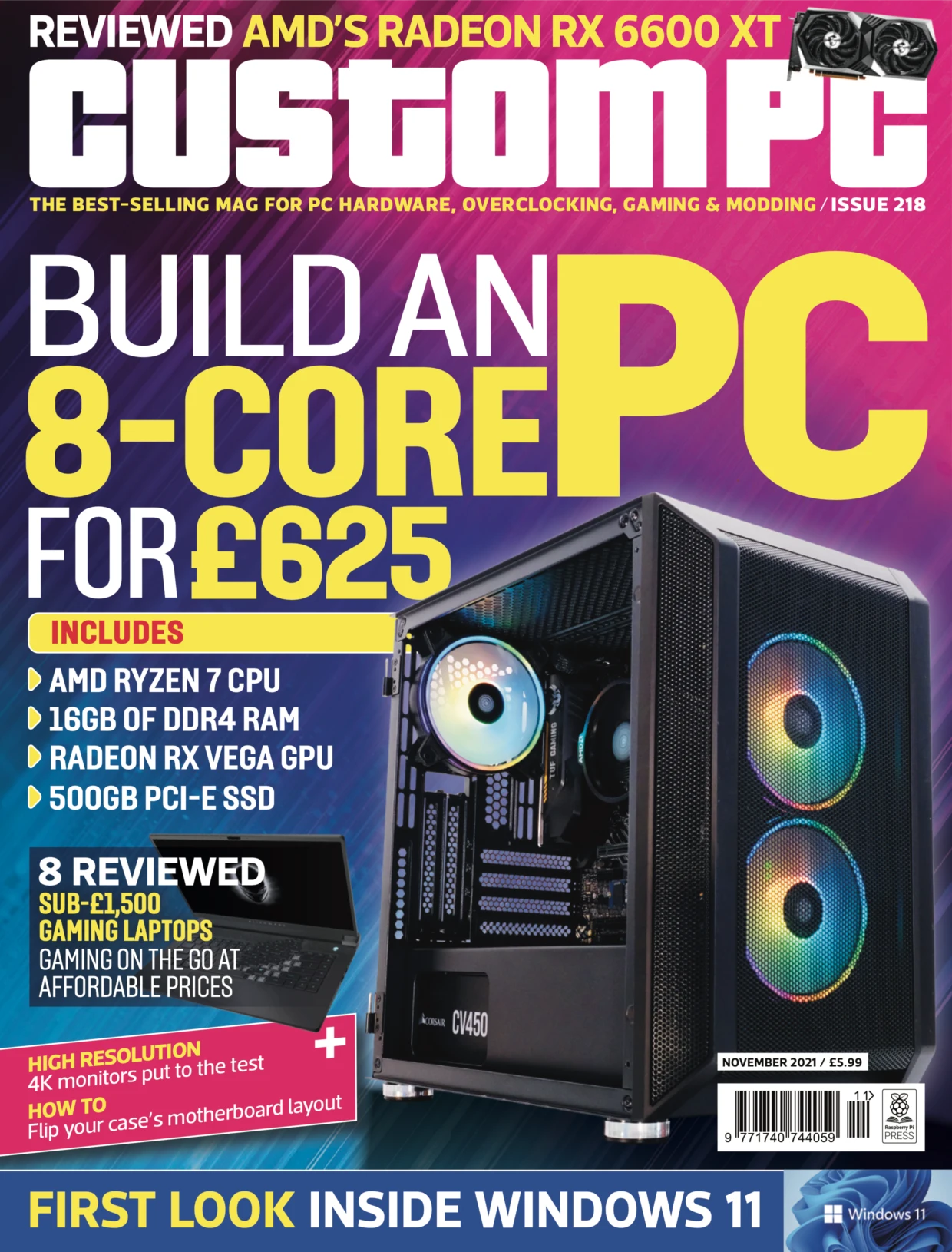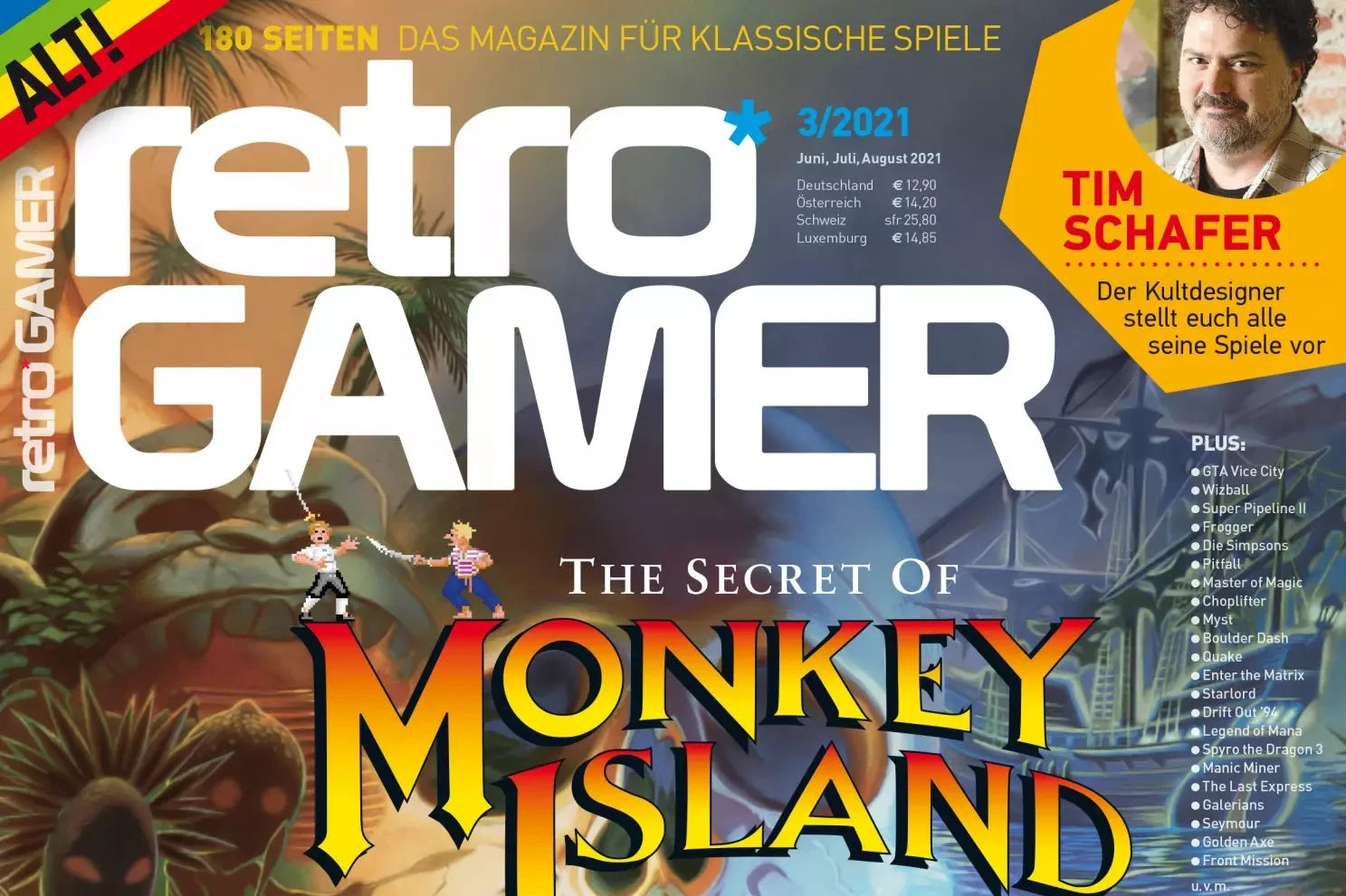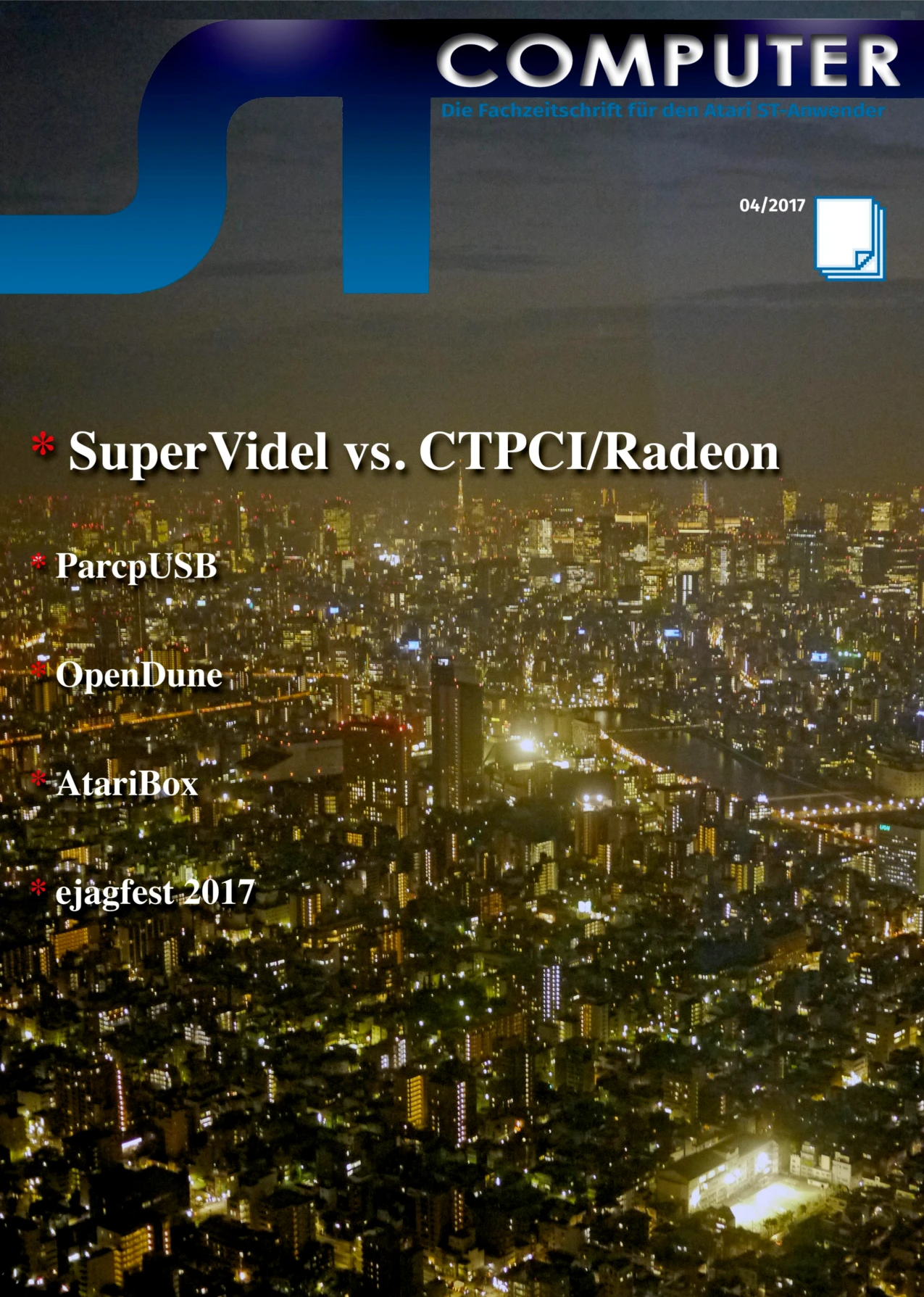Microzeit in the media

CRACKERS I: The Gold Rush
The overall design of the 336-page book is striking, from the gold embossed cover to the "skull" motifs found on the section headings and the bookmarks.
The narrative starts with the earliest home computers and the foundations of the industry. Crucially, views are presented from both sides. The crackers talk about how they worked, and the industry insiders are quoted on the damage being done.
The close links between the scenes (demos, games and cracking / swapping) are also uncovered. [...] There is a wealth of supporting illustrations in the well-designed pages, from archive photos and Galleries break up the text content, and two-page features add depth. There is technical detail but it never gets too complex.
In many ways, the story is incomplete without reading the second volume, but it is a compelling tale of the competition between creator and cracker - shining a light into the dark corners of the scene. The sales figures in particular paint a stark picture of what was going on. Microzeit Publishing has produced another quality publication.
Männerquatsch #122: Return of The Borders (25:25)

CRACKERS II: The Data Storm
Where the first book focused on the explosive rise of software piracy in the days of high-speed tape dubbing and ‘don’t copy that floppy’, the second moves into an era of digital networking.
However, it’s firmly positioned in the early 1990s, when ‘digital networking’ meant bulletin board systems (BBSes) rather than the Internet. While much of the latter half of the book focuses on the BBS scene – including a look at Little Lulu’s, the primary landing site for cracked software coming from Europe to the USA – this isn’t its exclusive focus. There’s also a section in the book devoted to the ‘Copy Markets’ where physical disks traded hands, a piece by Denis Lechevalier walking through the operation of copy protection systems on the Amiga and Atari ST, and even a section on ASCII art by French artist Senser (SNS). One big difference between the two books is that the second one includes a look at console game piracy. […]
In short, Crackers II is packed. Like its predecessor, it’s a must-have for anyone who remembers the era, fondly or otherwise, or who would simply like to learn what piracy was like before the Internet and peer-to-peer sharing software.

CRACKERS I: The Gold Rush
When increasingly sophisticated copy protection systems attracted technically capable crackers with a new puzzle to solve, the groups banded together under brands: The Medway Boys, Pompey Pirates, LSD, Automation, 42-Crew and more, each with their own unique style. […]
While the book’s primary focus is on the Atari ST cracking scene, there’s coverage in this impressively weighty 336-page tome of groups working on other systems, from the Apple II to the Sinclair ZX Spectrum. Coverage comes from a mixture of contemporary sources and later reportage, with plenty of interviews with those who were there, and the occasional extract cribbed from the documentation supplied with cracked software. It’s also far from wordy. At least half, sometimes more of each page is taken up with full-colour imagery, ranging from screenshots of cracked games to technical illustrations on how a piece of hardware or copy protection system worked, plus a few screen grabs from news reporting of the era.
Alone, Crackers I is an enjoyable romp through a fascinating time when software piracy and artistic self-expression went hand in hand. When paired with its follow-up, the two books will make for a must-have set.


Retro Feed
“Although CRACKERS I: The Gold Rush seems lurid in its statements and choice of quotations, we enjoyed reading it – not least because of the many colour photos and document scans, including a typical [...] ‘bait letter’ from the king of legal warnings Günter von Gravenreuth.”

CRACKERS I: The Gold Rush
What is most delicious about the book is its breadth which makes the world of piracy perspectives offer new insights even from the long line of... well, well, well... enthusiasts. […] While Breddin's book is about pirates and piracy, it is also a broad look at the domestic hobby of the era, gaming and the games industry. Everyone gets a say, both in the form of historical sources and interviews with people who wrote the book. It's hard to say what the most entertaining content of the book is, but the battle between copy protection and crackers comes out on top. How did game houses protect their games and how did they get hacked? […]
It's a story that has been told before in bits and pieces, loose memories. Most of the history of the pirate scene has been in the dark, where it has really wanted to be. The telling of its stories and the memories of the real pirates is a comprehensive work, a hollow digital revolution in which Breddin has travelled where no one has gone before.
Little Hall of Quotations

8-Bit Central (USA)
“This isn’t a one-and-done story. Its breath is wide and Breddin is doing a wonderful job in showcasing the stages across this series. I’d like to point out that there are many more stages to this history. I speculate we will be treated to several more tomes full of stories, history and passion!”
Atari Legend (UK)
“Everything you ever wanted to know about the Atari ST demoscene is written in this beautiful book filled to the brim with colourful screenshots of demo artwork. If you are a fan, this is definitely something you can not afford to miss.”
Games-Guide (GER)
“The book takes us in detail from the early development of home computers in the American Silicon Valley via BBS and ANSI-Art to the cracking scene in Europe and gives us an insight into the well-organised criminal networks.”
Le Mag MO5 (FRA)
“Well, despite the fact that there have already been three highly regarded volumes, the publisher Microzeit has just launched a fourth book, again on Indiegogo, which it presents as a ‘dark complement’ to the triptych.”
Powerkonsolen (GER)
„Not only does Beyond The Borders provide enough reading material for hours, but together with volume 1 it is a high-quality contemporary document of a bygone computer era.“
Retro (GER)
„Background information about the demoscene at its best, lots of artwork – simply worth reading!“
RetroKomp (POL)
“The book has exactly the same dimensions as the screen of the iconic 12" Atari monitor […]. This product should be on every Atarian’s shelf and not just maybe missing.”
Retro Gamer (UK)
“The print quality is exceptional, imagery and colours are vibrant and sharp, and it is one of those books that has the power to change your thoughts on the Atari ST, driving your interest to get into this machine.”
Retro Maniac (ESP)
“Written by journalist Marco A. Breddin, these books are distinguished by their careful compilation, the quality of the pictures and the thorough knowledge of the subject, getting into first-person contact with the protagonists of the demoscene and video games for the ST from the mid-1980s to the end of the 1990s, when the Falcon was fading into oblivion and the Jaguar was not helping Atari to compete on an equal footing in the console market.”
Retro Rewind (FIN)
“Finland was a very brand-loyal country in the heyday of home computers, but in Germany, for example, the race was more even. The German Atari demo groups were very active, but unknown to the layman. That’s why Breddin’s Atari ST books are so fascinating to read.”

Atari ST vol. 3
Like the two previous volumes in the trilogy, Return of the Borders is not just a demoscene story, although it is a good starting point. It's more of a naked look at people and digital communities, and how they have acted, thought and, above all, did it. How individuals and communities have emerged and shaped the existing, often aiming forward and upwards. It's a whole series of stories about how programmers, graphic designers, musicians and other digital artists and contemporaries have collaborated and pushed the boundaries of design and technology and programming. Demos, games, conventions, demo parties, game development, distribution, trade shows, successes and flops, European Atari game houses, Atari's last home consoles, corporate secrets and tales from the heart of Atari get all the space.
[…] The history and richness of digital culture and its communities, as well as the open-minded way of telling the story of enthusiasts who have crossed the fence into the commercial world, makes for a rare and sensitive read, which is a pleasure to enjoy quietly in the evenings – to google the people and events mentioned in the book and watch the dubstep recordings.

Atari ST vol. 1 & 2
The story gets a lot of extra depth by expanding to other levels. [...] Atari fans will recognise characters, demo groups and demos, but for me the characters of this world are completely alien, which is why the books are such great reads. Breddin has built a unique, incredibly tasteful narrative into his works that follows a very clear timeline and paints a picture of evolving communities and businesses. […]
Amazingly, the books are neither demoscale histories nor in-depth analyses of the games industry, but strong and revealing. Atariism is discussed both across the whole spectrum of the hobby and in the professional world, and the author interviews a large number of game developers, demo enthusiasts and other activists of the era, who bring a tasty dose of the past to the picture of the era. These works are not just about Atari. They are also an incomparably rich and colourful dive into the history of digital culture, opening doors to a world that many of us in Finland have never experienced. 10/10.
Appearance in YouTube Shows & Streams

Atari ST vol. 3
The Falcon claims the bulk of the notable demo productions and, as in the previous books, author Marco A. Breddin revels in page-long photo spreads of demos like Lost Blubb or Sonoluminescence, which make you want to see the demos in motion afterwards. When it comes to Falcon games, titles like Double Bobble are celebrated, but it is also not concealed that many Falcon games remained a promise and were never completed. Probably the biggest mistake concerns Kassian Alexander Goukassian, the CEO of falkemedia, who is not only credited with the STEmulator (developed by Thomas Göttsch) but is also made the hardware developer. In fact, there was a team behind the Milan I and II and Goukassian was mainly responsible for the marketing, presentation and vision – quasi the Steve Jobs of Milan Computersysteme. [...]
Like its predecessors, Return of the Borders is an impressive collection of stories, anecdotes and material that does justice to the scene. Ultimately, it is also the task of other books to take care of the aspects far removed from the scene with similar meticulousness.

Interview with Zapiy
About the foundation of Microzeit and the constraints of crowdfunding book productions. An intimate look back at the experience of the first two Atari ST books.

Atari ST vol. 2
Within the years covered by the book, great demo classics are presented, parties are reported on and what Atari was doing at the time is shown. For this, author Marco Breddin dug through websites, magazines, brochures and contacted scene members – the references alone take up ten pages in the book. "Beyond the Borders" is also the feeling readers get who got their Atari information mainly from the local press. There are some interesting facts in the book, for example that Atari did take notice of the scene. Breddin always writes the books in German, but the (Atari) audience capable of German would be too small to finance such a book.
Anyway, the topics of volume 2 are again well chosen, the illustration keeps the high level of volume 1 and the many short interviews are an enrichment. Both books deserve recognition beyond the Atari scene.

Atari ST vol. 1
The Atari demoscene has been mostly neglected in print media, but with the book series The Atari ST and the Creative People it gets the appreciation it deserves. Apart from this encompassing theme, the book is sorted chronologically. The author deserves praise for not only covering one demo after the other, but also considering the context with short detours into Atari history. Breakin' the Borders was written in German and then translated into English. […] But anyone who now thinks with horror of unsuccessful manual translations from the '80s can be reassured: The work is not beyond comprehension. Neither does it make the mistake of getting too involved in the scene language, so the target audience is not only those who were involved in the Atari scene, or even part of it.
Breakin' the Borders is an important book about a part of ST history that has so far been much too shortlisted, especially in print. The interviews alone (with Erik Simon, Jochen Hippel, Marc Rosocha, Richard Karsmakers, among others) are already worth buying the book.

André Eymann on Breakin’ The Borders
Breakin’ the Borders is a great work that traces Atari culture between 1984 and 1990 and places it in a historically relevant context. But it is much more than that. Anyone interested in computer history, the history of Atari or digital culture in general will find Breakin’ the Borders a fascinating book that cannot be read in one evening. The level of detail and passion with which the book has been arranged is outstanding. A masterpiece that belongs on every computer bookshelf!

David B. Goossens on Breakin’ The Borders
Perhaps a topic that is not talked about enough and that German journalist Marco A. Breddin has shed light on: the importance that young computer enthusiasts, including programmers, musicians and graphic designers, saw in breaking through the seemingly limited system specifications of the time: impossible scrolls, an unimaginable number of colours on screen at the same time, “breaking” the overscan limitation on monitors… a whole range of techniques that brought these underground known groups as close as possible to the silicon, to the hardware [...].

Darren Doyle (Greyfox) on Breakin’ The Borders
Enter Breakin’ the Borders and for the first time, showing people what they have been missing about this truly fantastic machine. Breakin’ the Borders is a tale of the Atari ST Demoscene, with its electronic artistry and coding acumen that lead many to full-time careers within the video gaming industry purely based on making this machine do something it wasn’t designed to do in the first place. This was the true magic of the Atari ST, which many of us still enjoy today.

Interview mit Colline
Februar 2017. Crowdfunding in der Praxis. Digitale Werbemittel und Kostenkalkulation eines Buchprojektes. Gründung von Microzeit.
Interview mit Axel Teichmann
Mai 2016. Während der zweiten Finanzierung von Volume 1. Faszination und Leidenschaft Atari ST. Entwurf der dreiteiligen Buchreihe.

Interview with Peter Ward
May 2016. Pre-production of my first book. About the inspiration from video games and the imprint of childhood in the ’80s.



